“I believe that art can create the power and energy of happiness,” artist Hung Yi.
Check It Out!
By Nina Heyn, Your Culture Scout
As you probably know, apart from gorgeous views, overpriced real estate and great restaurants, San Francisco is famous for its outstanding museums that rival the New York ones. Here are three of them to check out when you can.
Despite its collection of 18,000 objects and consistently ambitious and unique exhibitions, the museum is not as crowded as it deserves so it’s fun to visit any day. The museum experience starts at its front sidewalk. A staid, grey stone building (it used to be the San Francisco City Library) is enlivened by a multicolored, whimsical sculpture of a Chinese dragon in a style of kids toys and folk art rather than a traditional look of sinewy dragon from New Year’s celebrations.

This happy, plump dragon in multicolored sneakers was created by a contemporary Taiwanese artist Hung Yi. The statue is painted with various auspicious fortune expressions, and it is, of course, great for taking selfies. Inside, matters get more serious with permanent displays of art from South and Southeast Asia, Iran, Central Asia, the Himalayas, China, Korea and Japan. Asian Art Museum holds one of the most comprehensive Asian art collections in the world, such as millennia-old statues of Indian deities and the world’s earliest known dated Chinese Buddha figure from the 4th century. Chinese gallery houses a large collection of porcelain from all the dynasties, priceless bronzes and Qing dynasty painting scrolls. Practically every aspect of Asian art, from Tibetan thangka paintings to Japanese lacquer to Korean pottery has its significant and beautiful representative here. The museum is also well-known for major international exhibitions, like the last year’s presentation of “Emperor’s Treasures,” which was a selection of art collected by eight famous emperors over a thousand years, brought over from the National Palace Museum in Taipei. San Francisco, Bay Area and other Northern California communities have been home to various Asian populations for very long time and with such a discerning audience on hand, the museum is a vibrant center of Asian culture and education. If you are interested in anything Asian, this museum and the East Asian Library at Berkeley are some of the best sources anywhere.
The California Academy of Sciences, one of the largest and most modern natural history museums in the States, has been entirely redesigned in 2008 by Italian star architect Renzo Piano. Piano’s famous designs include such bold landmarks as Centre Beaubourg in Paris, the London Shard building, and Centro Botin in Spain. In the US, his buildings include a 2015 redesign of the Whitney Museum of American Art in New York and this amazing “Green Roof” structure in San Francisco.
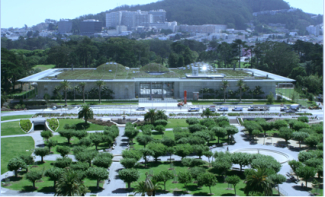
The living roof has been planted with 1.7 million native California plants to create a mini biosphere, to absorb almost all rainwater coming in and to serve the mission of sustainable design as befits the building’s purpose. The central hall’s huge glass roof opens at night allowing cool oxygenated air inside the building, thus providing a natural air conditioning. In Piano’s words the roof was designed to be “like a piece of park flying.” The whole building is conceived as an opposite of traditional dark halls of science halls – it’s open, airy, modern skylights and cabling grids provide energy and light to different areas filled with plants and living creatures. Downstairs’ swamp is home to an albino alligator (he does not move much but looks really cool), a central glass column staircase leads upwards through a mini-rainforest with exotic birds and eye-popping huge butterflies, and the very bottom of the structure houses a network of pools and aquaria with thousands of exotic sea creatures. You could come to admire this bold and complex modern architecture and you could leave with otherworldly pictures of fluorescent corals and bioluminescent fish.
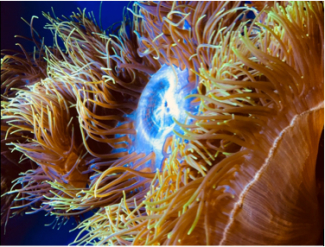
De Young Museum of Fine Arts is the other great museum located inside The Golden Gate Park and it displays an anthropological collection of the Fine Arts Museums of San Francisco. Like California Academy of Sciences, this building was also damaged by the 1989 Loma Prieta earthquake and it had to be completely rebuilt in the early 2000’s. Its copper-clad structure looks from afar like a prime example of a brutalism style, but inside there is a trove of thought-provoking art from both American continents, the Pacifics and Africa.
A textile collection is a fascinating mix of fabrics, costumes, beadwork, embroidery and contemporary fiber art – one of the largest in the US. The collection spans centuries and numerous world cultures to show that anything can be made into clothing and anything can be considered beautiful. There is an Inuit anorak made of duck breasts and dog hair, a Christian Dior embroidered gown and a Yoruba tribe ceremonial cloak made of mirrors, strips of cotton and wood. There are Oriental carpets that somehow preserved vibrant colors for centuries, exotic feather baskets, Ainu tribe kimonos and a collection of contemporary “wearable art.”
Decorative arts collections include ceremonial masks from the Pacifics, Mayan pottery and a skull rack from New Guinea (don’t ask). A large American paintings section has great collection of representative work from the majority of artists from the all the past centuries. Paintings range from Mary Cassat’s La Toilette to John James Audubon squirrel drawing, and from beautiful Richard Diebenkorn’s Ocean Park abstracts to Carleton E. Watkins photography of Lake Tahoe.
As with the Asian Art museum, de Young stages ambitious temporary exhibits worth checking out. Last summer, 300,000 visitors attended a special exhibition “The Summer of Love Experience: Art, Fashion and Rock n’ Roll” celebrated both the late sixties fashion and the museums’ historic location in the Golden Gate Park’s hippie culture capital.
These are just three of many ambitious cultural centers in San Francisco but they all qualify as a source of rich and unconventional “food for the soul” experience.

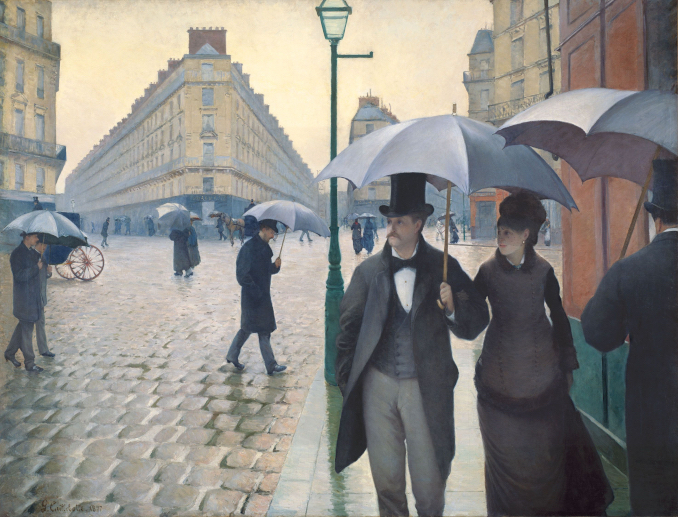
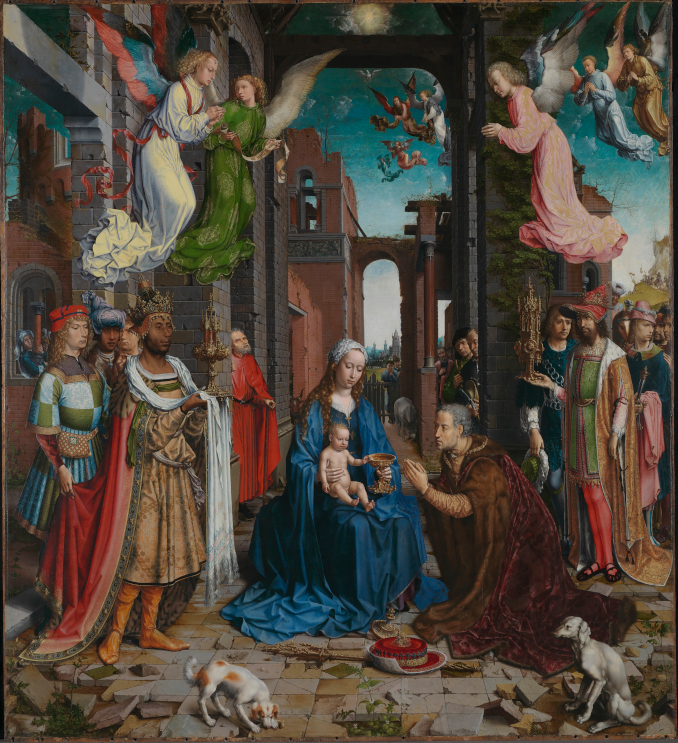
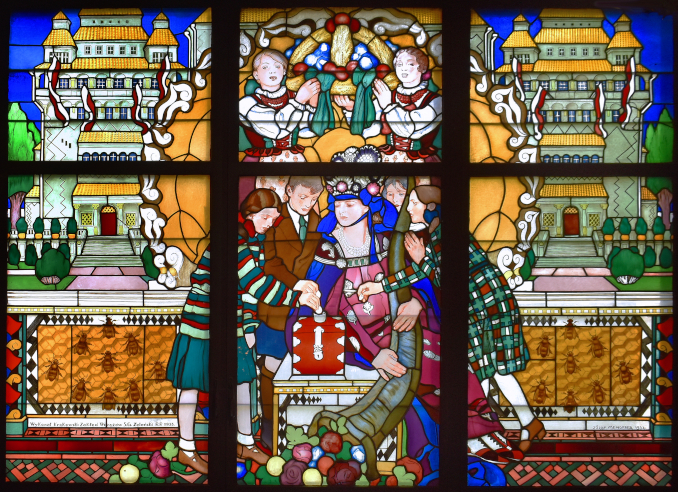

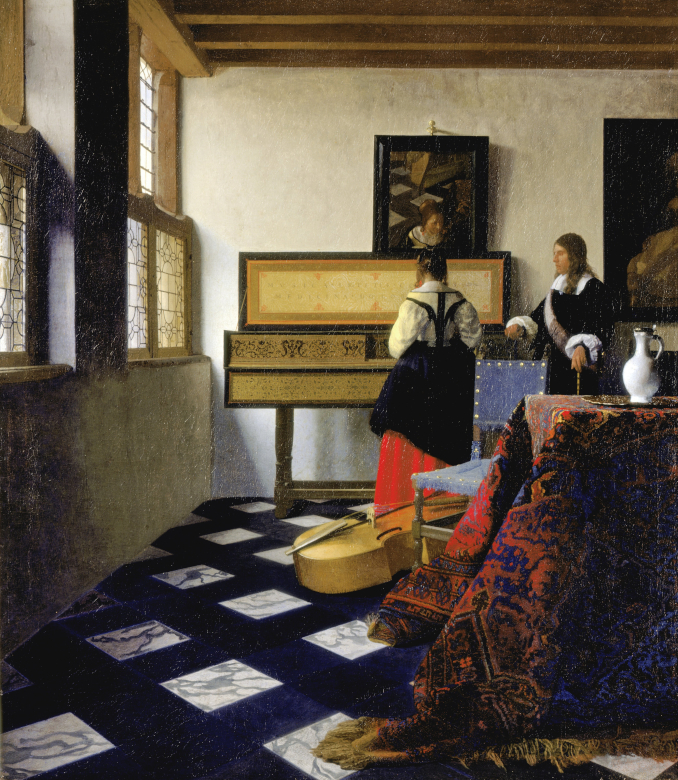
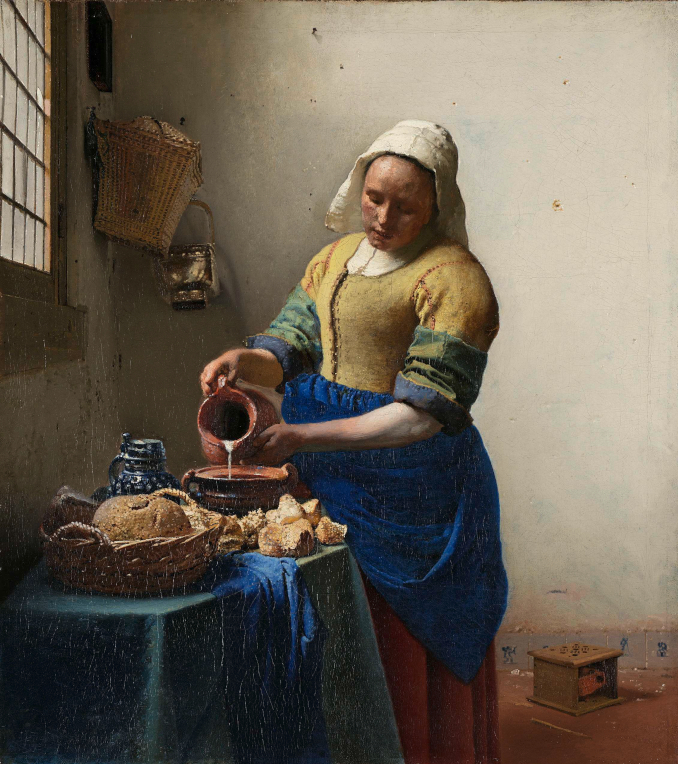
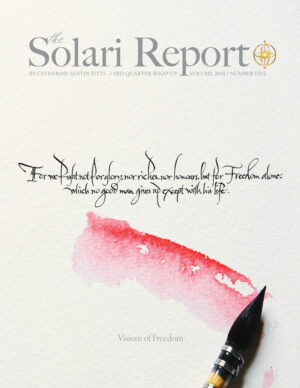 3rd Quarter 2020 Wrap Up: Visions of Freedom (104 pages)
3rd Quarter 2020 Wrap Up: Visions of Freedom (104 pages) 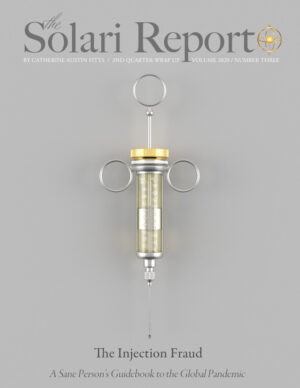 2nd Quarter 2020 Wrap Up: The Injection Fraud (132 pages)
2nd Quarter 2020 Wrap Up: The Injection Fraud (132 pages)